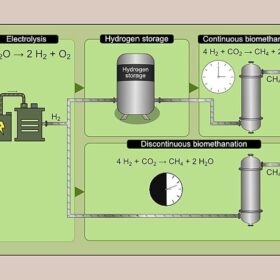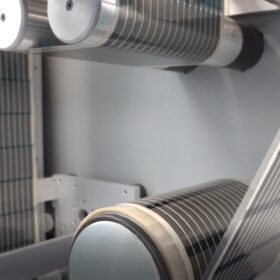The Hydrogen Stream: Brazil reveals $3.6 billion hydrogen production plan
Brazil has announced a $3.6 billion hydrogen production plan, Adnoc has launched a green hydrogen refueling-station pilot in the United Arab Emirates, and the European Union has moved forward on the establishment of EU-wide hydrogen rules.
The Hydrogen Stream: Germany, Italy plan hydrogen pipeline to North Africa
Germany, in collaboration with Italy, has revealed plans to import hydrogen from Northern Africa.
PV-driven Carnot batteries may help convert coal power plants into renewable energy facilities
Danish researchers investigated how solar-powered Carnot batteries could be integrated into decommissioned coal power plants to produce clean energy. They found that a 300 MW retrofitted plant coal plant with 1.37 GWh of thermal storage capacity has the potential for annual net power production of up to 1,150 GWh for 12 h storage at a levelized cost of energy of €88.09 ($95.97)/MWh.
The Hydrogen Stream: German hydrogen collaboration strategy takes shape
Dutch company Gasunie will collaborate with two German transmission system operators (TSOs) and one Danish TSO to import green hydrogen from the Netherlands and Denmark. Meanwhile, French independent power producer (IPP) HDF Energy commits to co-develop project in Morocco, and two Japanese companies move ahead with hydrogen production plant in Malaysia.
Photovoltaics for biomethanation
Researchers in Denmark have studied the technical and economic feasibility of biomethanation through large-scale PV power generation. They said that the intermittent PV-driven biomethanation process matches the efficiency of continuous processes after several days.
InfinityPV presents measurement system for roll-to-roll thin film PV manufacturing
A new imaging system for contactless defect detection in roll-to-roll printed thin film solar cell manufacturing lines is available from InfinityPV, a Danish printed electronics equipment manufacturer. The so-called ultrafast laser beam induced current mapping system is suitable for manufacturers of perovskite, organic, kesterite, copper indicum gallium diselenide (CIGS) and amorphous silicon PV foils and can be retrofitted into existing roll-to-roll lines.
Scientists use game theory to monitor renewables auctions
An international team of scientists has assessed different strategies for volume-based and fixed-amount subsidy auctions for large-scale wind and solar projects. They have found that higher subsidy levels in auctions lead to lower final prices.
The Hydrogen Stream: Japan backs hydrogen in aviation
The Japanese government has confirmed to pv magazine that it is launching a new support scheme for hydrogen in aviation, while Japanese investors continue to actively pursue participation in a green ammonia project in South Africa.
The Hydrogen Stream: India, Saudi Arabia sign hydrogen agreement
India and Saudi Arabia have agreed to develop electrical interconnections and low-carbon hydrogen, while Masdar has partnered with Boeing ion the sustainable aviation fuel (SAF) industry.
The race for 100% solar
With utility scale solar installations accelerating, Philip Wolfe, founder of PV data consultancy Wiki-Solar, drills into the data to highlight some interesting variations in relative progress around the world.










